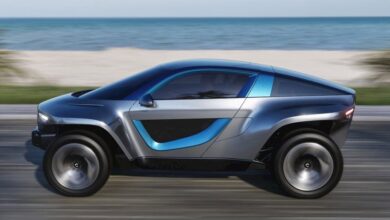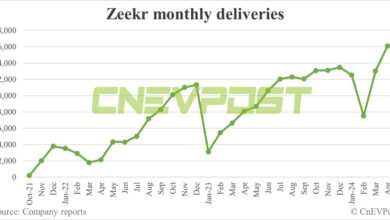Does America have a used EV problem – or opportunity?

In the US, there are two used cars on the road for every new one. Pre-owned auto sales is big business. Plummeting prices, soaring inventory, and tax season mean that a wave of new car shoppers will be looking to find a bargain in the used EV market. Many of these are people who have been interested in an electric car for a while but have been priced out of the new technology.
However, this market shift presents a challenge: evaluating and pricing used electric cars.
Estimating the sale price of a used gas car is a standard practice. There are tons of online tools where you can plug in the odometer and body condition to get a good idea of a used car’s value today and to help you understand how much money you may need to put into repairs. However, when it comes to EVs, the odometer is not the only predictor of performance or reliability. Instead, it’s all about the high-voltage lithium-ion battery, which directly determines the current and future range of a used electric car.
EVs are powered by big, expensive lithium-ion batteries. Although EV batteries degrade much more slowly than their cousins in cell phones, both types of batteries do lose capacity and power over time. Whether you’re an individual or commercial buyer, having transparency into the state of the battery is critical to understanding a car’s value. A battery in good condition means the car will have more range between charges and, most likely, many more years of stress-free driving. A battery that is slightly more degraded will mean shorter range, but may make a lower priced bargain car for the right owner. EV shoppers are savvy enough to understand this and are willing to pay a premium to know what they’re buying.
It is prohibitively expensive and invasive to test a car’s battery directly. Auction houses, dealerships, and consumers don’t have the resources to perform chemical or electrical testing – and most used EVs don’t need it. Looking at data from over 15,000 EVs on the road, 98.5% of them have their original batteries. In an even wider population of EVs, 94% of them have a Range Score of 90 or above. This means that today, such a used EV is estimated to get 90% of its range when new. Given that the average range of a new EV is above 250 miles per charge, that’s more than 225 miles of range even on a used vehicle.

While the overall statistics for used EVs are good, drivers still want to know if the one particular car that they are looking at has good range, and if that specific used EV will continue to meet their needs over the coming years. How can you understand an EV range without driving it for years?
As we mentioned last month, the EPA range for a certain make and model of an electric vehicle is illustrative but inaccurate from day one. It is even less useful after a car has been on the road for a few years since the range will inevitably drop from new.
One company has made investments to try to help. They are now producing a vehicle valuation that leverages the power of big data to make value adjustments for good batteries. Recurrent’s Range Score, which uses data from 100 million recorded EV miles, helps with the value adjustments.


With more than 2.5 million vehicles in the U.S. used EV market, many drivers can find the right car for them.



